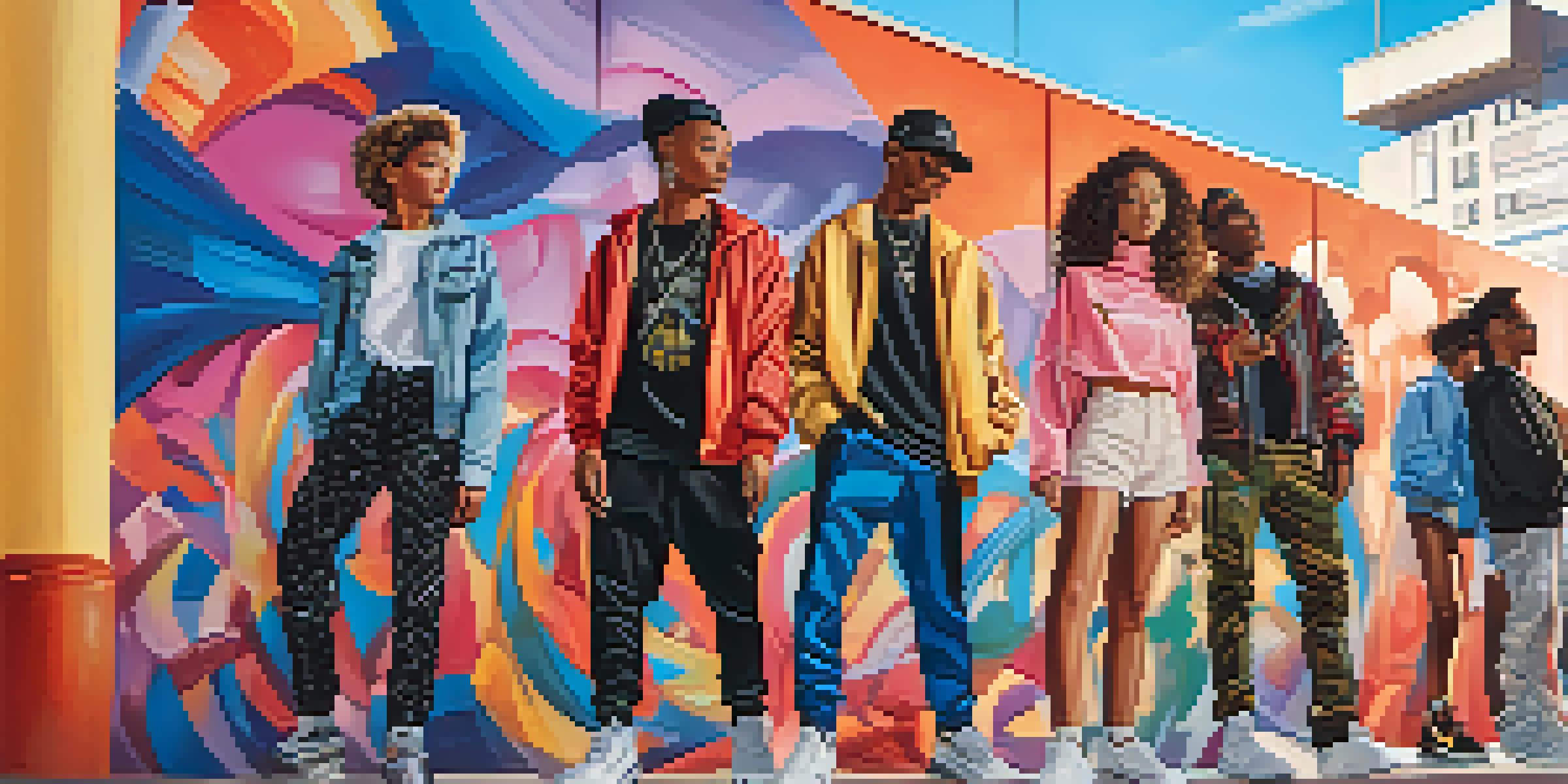Cultural Appropriation in Streetwear: A Modern Perspective

Defining Cultural Appropriation in Streetwear
Cultural appropriation refers to the adoption of elements from one culture by members of another culture, often without permission. In streetwear, this can manifest through the use of traditional symbols, clothing styles, or designs that belong to a specific culture. For instance, when high-fashion brands incorporate Indigenous patterns into their collections, it raises questions about respect and representation.
Cultural appropriation is not a new concept; it’s a longstanding issue that continues to be debated and discussed across various fields, including fashion.
Understanding this concept is essential, as streetwear is deeply rooted in diverse cultural influences. The blend of hip-hop, skate, and punk cultures has historically celebrated individuality and expression. However, it’s crucial to recognize when this celebration slips into appropriation, which can lead to commodification and disrespect.
By establishing a clear definition, we can better analyze the complexities of streetwear. This understanding sets the stage for a deeper conversation about how to honor and respect cultural origins while still enjoying and participating in the fashion world.
The Roots of Streetwear and Cultural Exchange
Streetwear has its roots in urban culture, emerging from the creative streets of cities like New York and Los Angeles in the late 20th century. This genre of fashion has always thrived on cultural exchange, borrowing from various influences including music, art, and community styles. For example, the skate culture of the 80s drew heavily from punk fashion, creating a melting pot of influences.

As streetwear evolved, it began to incorporate elements from a broader array of cultures, including African, Japanese, and Indigenous aesthetics. This blend can be seen in the designs of popular brands that mix bold graphics with traditional motifs. Such fusion can be celebrated as a form of artistic expression, yet it demands a careful approach to avoid crossing into appropriation.
Cultural Appropriation Explained
Cultural appropriation involves adopting elements from one culture by another, often raising concerns about respect and representation in streetwear.
Ultimately, the history of streetwear is one of collaboration and inspiration, highlighting the importance of understanding the origins of these influences. By appreciating this history, both designers and consumers can engage in more thoughtful and respectful cultural interactions.
The Fine Line: Inspiration vs. Appropriation
Differentiating between inspiration and appropriation can be tricky, especially in a vibrant and ever-changing landscape like streetwear. Inspiration often involves a deep appreciation for a culture, where elements are integrated respectfully and meaningfully. For instance, a designer collaborating with a cultural artist to showcase their work tends to lean towards inspiration.
Fashion is the armor to survive the reality of everyday life.
On the other hand, appropriation may occur when cultural elements are used without understanding or acknowledgment, often for profit. This can lead to the erasure of the original culture’s significance and context. A clear example is when brands produce merchandise featuring sacred symbols or traditional attire without engaging with the communities they originate from.
Navigating this fine line requires awareness and sensitivity, both from designers and consumers. By fostering open dialogues about cultural influences, we can encourage a fashion landscape that thrives on respect and mutual understanding, rather than exploitation.
The Role of Social Media in Cultural Conversations
Social media plays a pivotal role in shaping conversations around cultural appropriation in streetwear. Platforms like Instagram and TikTok allow users to share their thoughts, experiences, and critiques instantly. This democratization of voice means that marginalized communities can highlight issues of appropriation more effectively than ever before.
For example, when a brand launches a collection that draws from a specific culture, social media can rapidly amplify both praise and backlash. This real-time feedback loop gives communities the power to voice their concerns and engage in discussions about cultural representation. Consequently, brands are increasingly held accountable for their choices.
Inspiration vs. Appropriation
Differentiating between inspiration and appropriation is crucial, as the former involves respect and acknowledgment, while the latter can exploit cultural significance.
The influence of social media fosters a culture of awareness and activism, encouraging consumers to think critically about what they wear. As a result, it pushes streetwear brands to navigate cultural influences more thoughtfully, promoting a more inclusive fashion environment.
The Impact of Celebrity Endorsement
Celebrity endorsements can significantly impact how cultural elements are perceived in streetwear. When a high-profile figure incorporates a cultural style into their wardrobe, it can bring attention to that culture, but it also risks oversimplifying or misrepresenting it. For example, when a celebrity wears traditional attire as a fashion statement without proper context, it can be seen as reducing cultural heritage to mere trend.
Moreover, celebrities often have the power to either uplift or dilute cultural narratives. When they engage authentically with cultures, they can promote appreciation and understanding. Conversely, careless endorsements can perpetuate harmful stereotypes and contribute to cultural appropriation debates.
As consumers, it's essential to be aware of these influences and consider the stories behind what we wear. Engaging with fashion through a lens of respect and curiosity helps to elevate the conversation around cultural representation in streetwear.
Navigating Cultural Sensitivity in Design
For designers in the streetwear industry, navigating cultural sensitivity is paramount. This involves not only understanding the cultural significance of certain designs but also engaging with those communities authentically. One approach is to collaborate directly with cultural representatives, ensuring that the final product honors the original intentions and meanings.
Designing with cultural sensitivity means asking questions and doing research. It’s about recognizing the stories behind patterns, colors, and symbols. For instance, a designer might explore the history of a specific textile, learning about its significance before incorporating it into a collection.
Future of Inclusive Streetwear
A more inclusive future in streetwear can be achieved through education, collaboration, and a commitment to honoring cultural influences.
By prioritizing cultural sensitivity, designers can create pieces that not only celebrate diversity but also foster appreciation and respect. This thoughtful approach can lead to innovative designs that resonate with a wider audience while honoring the cultures they draw from.
Looking Towards a More Inclusive Future
As the conversation around cultural appropriation in streetwear continues to evolve, there is hope for a more inclusive future. Education plays a vital role in this shift, as both consumers and brands become more aware of the importance of cultural representation. By learning from the past, we can advocate for practices that celebrate diversity rather than exploit it.
Moreover, the rise of independent brands that prioritize cultural authenticity is encouraging. These brands often tell the stories behind their designs, fostering a deeper connection between the consumer and the culture. This shift signifies a movement towards valuing the origins of cultural elements rather than merely appropriating them.

Ultimately, the future of streetwear can be one that respects and honors cultural influences. Through ongoing dialogue, collaboration, and a commitment to understanding, we can create a vibrant fashion landscape that uplifts and celebrates the rich tapestry of cultures from which it draws inspiration.